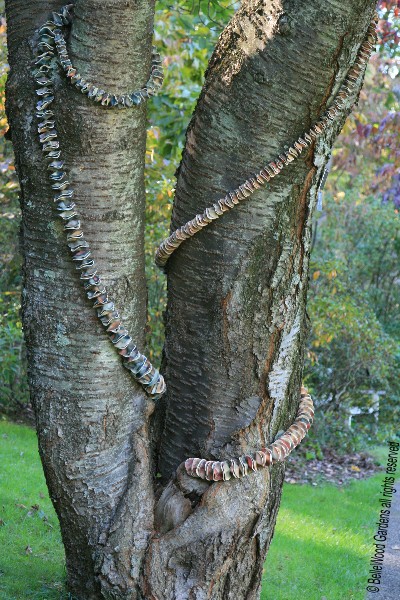
Friday, 8 October 2010
Wind Through the Trees at Jenkins Arboretum
It was a wonderful morning at Chanticleer followed by a visit to Haverford College Arboretum and now we fortunate members of Garden Writers Region II wend our way to Jenkins Arboretum & Gardens in Devon, Pennsylvania. Perhaps less recognized among the general gardening public than some other places, Jenkins has been open to the public since 1976. Their 46 acres were closed for all of 2009 while their spiffy, green, Gold Level LEED Certified John J. Willaman Education Center was constructed. In October 2010 they launched into their 35th anniversary with an outdoor sculpture exhibition. Set along the winding paths on 15 sloping acres, strung from, winding around, and festooning the trees, down to and over the pond, Wind Through the Trees features 65 sculptures - some move, some sound in the wind. As with all good art shows there are pieces that are fabulous, others that are pleasant, and some that I cannot fathom at all. Since 65 images are more than I care to post and you would want to download and view here instead is a selection of my favorites. Chacun à son goût.
.

Vining plants have different ways of holding on to a sturdy neighboring plant
for support. Virginia creeper grabs on with hold-fast aerial rootlets.
A sweet pea's compound leaves are modified into grasping tendrils
at their end. Or, they may twine and wind around their support, as do
morning glories. Aerial Tendrils loop round about this cherry tree,
one strand of porcelain discs clockwise, the other counterclockwise.
Soft colors mimic lichens. Unwound, their shell-like shapes can rattle.
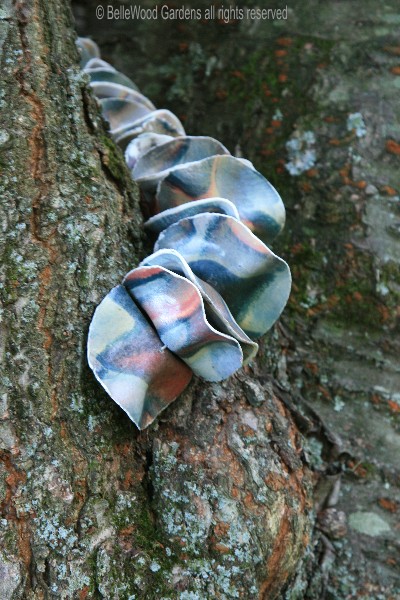
.
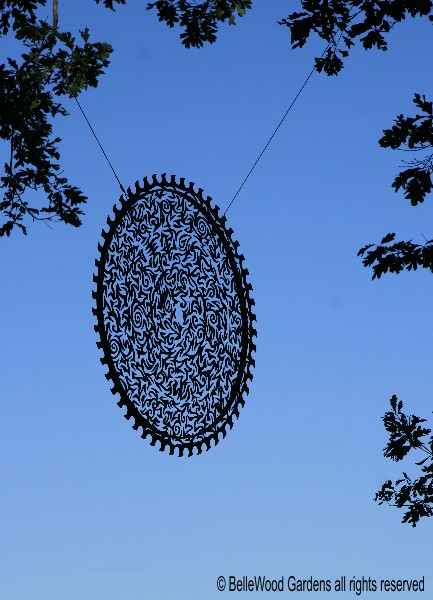
A class in oriental brush painting quickly introduced me to the importance
of negative space, that portion of the paper that remained blank. Here,
using a plasma cutter and mig welder, the extraneous metal - a negative -
is removed and the remaining positive metal of a saw blade is now
transformed into an airy arabesque of Captured Flight.
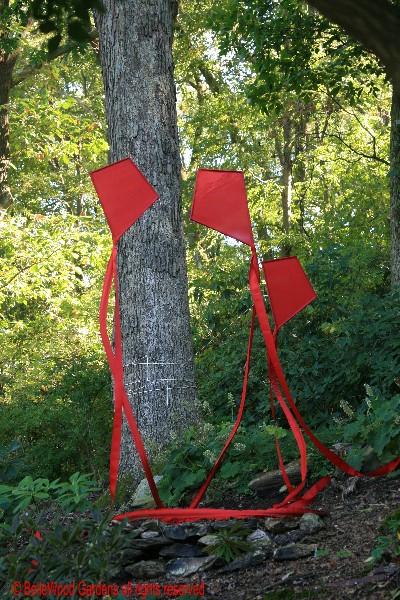
Cannot see the wind, only what effect it has on other objects. It tosses
autumn leaves, for example, and parachutes seeds of plants as diverse
as maple trees and butterfly weed. Perhaps that's how so many different
cultures took up flying kites. From childish pasttime to serious adult play,
to art, with Tethered Kites of steel and fabric, ribbon, string, and paint.
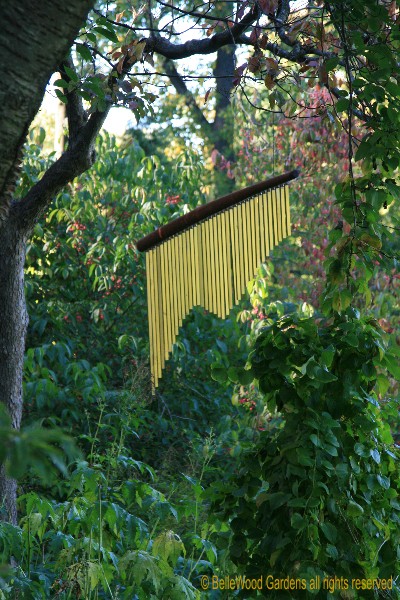
Square brass tubing suspended in space from a smoothed piece of
Spanish cedar. Not the smooth repetitive oscillation of a sine wave
instead the artist gave it the name of Sine Chime, 2010. A set
of aeolian pipes more complex than typical wind chimes, but more
for looks than for music. In this case, form supersedes function.
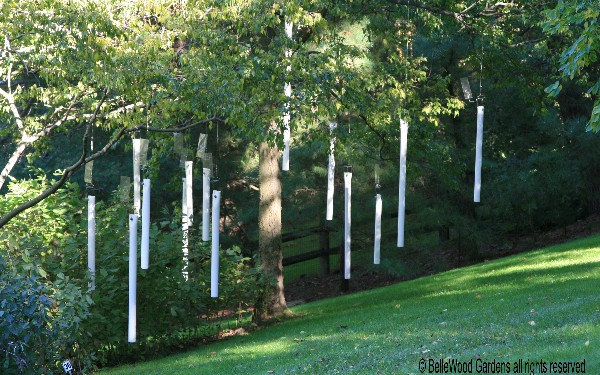
One of our teachers in the two-week-long intensive seminar on Japanese garden art, held in Kyoto
said that a garden must appeal to all of our senses, not just sight and scent but also touch and taste,
and sound. Soughing whisper of a breeze in pine trees, susurrus of a zephyr in a meadow, and here -
Frog Horn, fifteen lengths of 4-inch diameter PVC pipe in lengths from 60 inches down to 26 inches
and tuned, tuned to G sharp above middle C to B flat above that. Wind in the trees, and the pipes sound.
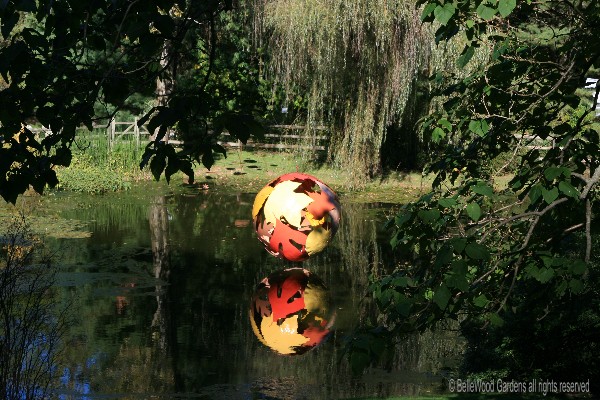
Leaves, huge leaves, crafted from aluminum, given autumnal hues with paint, shaped and formed into
an outsized sphere. Suspended in space (how did they ever manage this?) above the water's surface.
There's a gap, a handspan, a small interval between sphere and reflection. Revolve makes marvellous
use of its surroundings. Its shifted scale from hand-sized leaves on nearby trees - I see oak and maple,
tulip poplar and sassafras. Difficult to imagine this artwork anywhere else but here, mirrored in the pond.
.
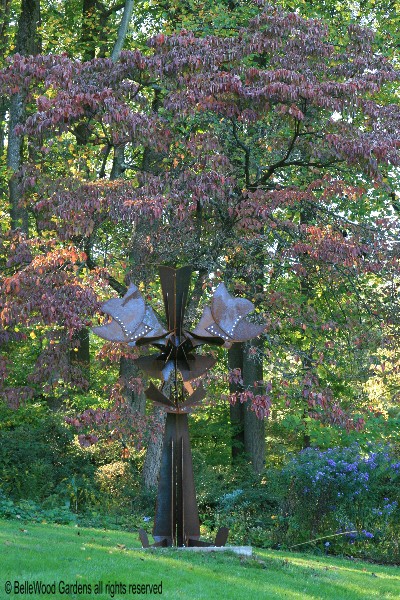
This is the perfect season to admire Ringii, its rusted steel plates
so effectively complemented by the flowering dogwood's autumn color.
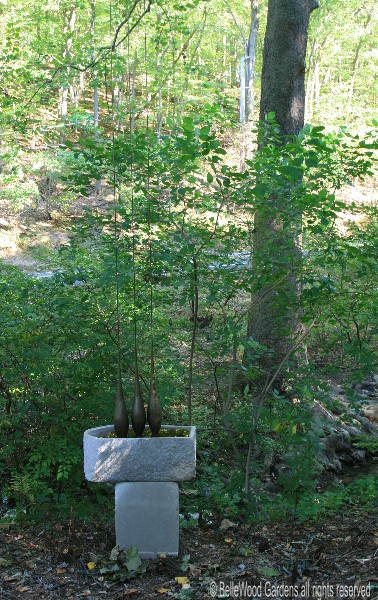
To quote from the catalog here's what the artist had to say about
Wind Chime Pods: "As the wind blows the "seed pods" they bump
into each other and make deep bell tones." Dipping down to gently
merge with the pool of water (see the meniscus as the water crawls
up the bronze shapes?) they'll trace a vanishing pattern on its surface.
Can you imagine this in winter, with a dusting of snow and solidified water.
Of all that I saw I think this is my favorite piece. Magical and lovely.
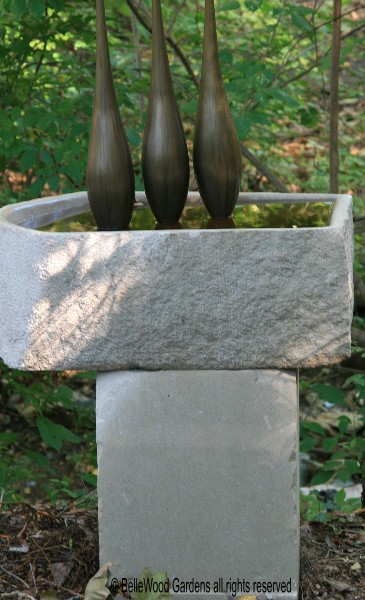
.
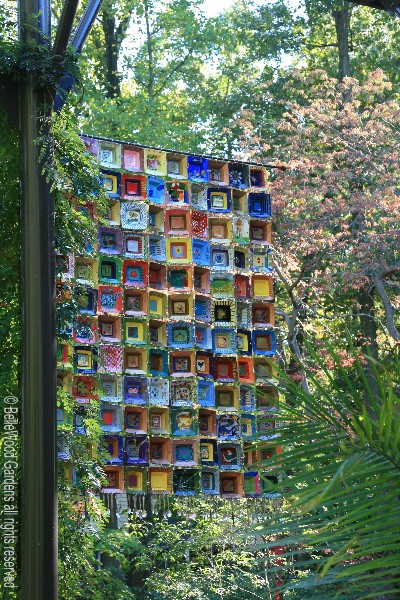
Like an oversized mosaic quilt, Picnic in the Park was created specifically for this exhibition.
It is for sale, just like all the other art works. Put together with nickel plated rings and brass grommets
the 120 recycled salad plates and bowls embellished with gesso, paints, polyurethane, and marine wax
can be rearranged, divided into several smaller "quilts." I thought the "fringe" of recycled
old cutlery was especially playful and amusing, especially when the wind jingled them together.
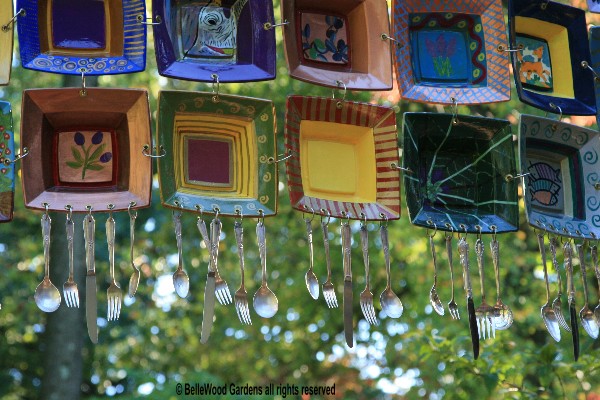
.
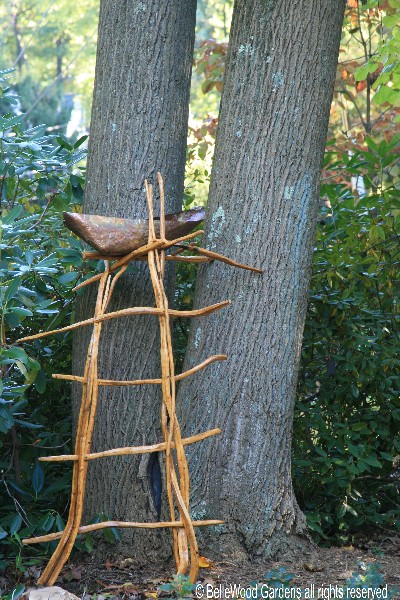
Reminiscent of a ladder, a frequent theme of this artist's work,
Journeys-Vines uses interweaving lengths of oak, stabilized
with "rungs" and supporting a copper vessel. I think that when,
with time, it ages, takes on a patina, softens to subtle gray and
greenish blue verdigris the sense of a journey would increase.
.
The exhibition continues through June 2011. If you have the opportunity, do make a visit. You'll be glad that you did.